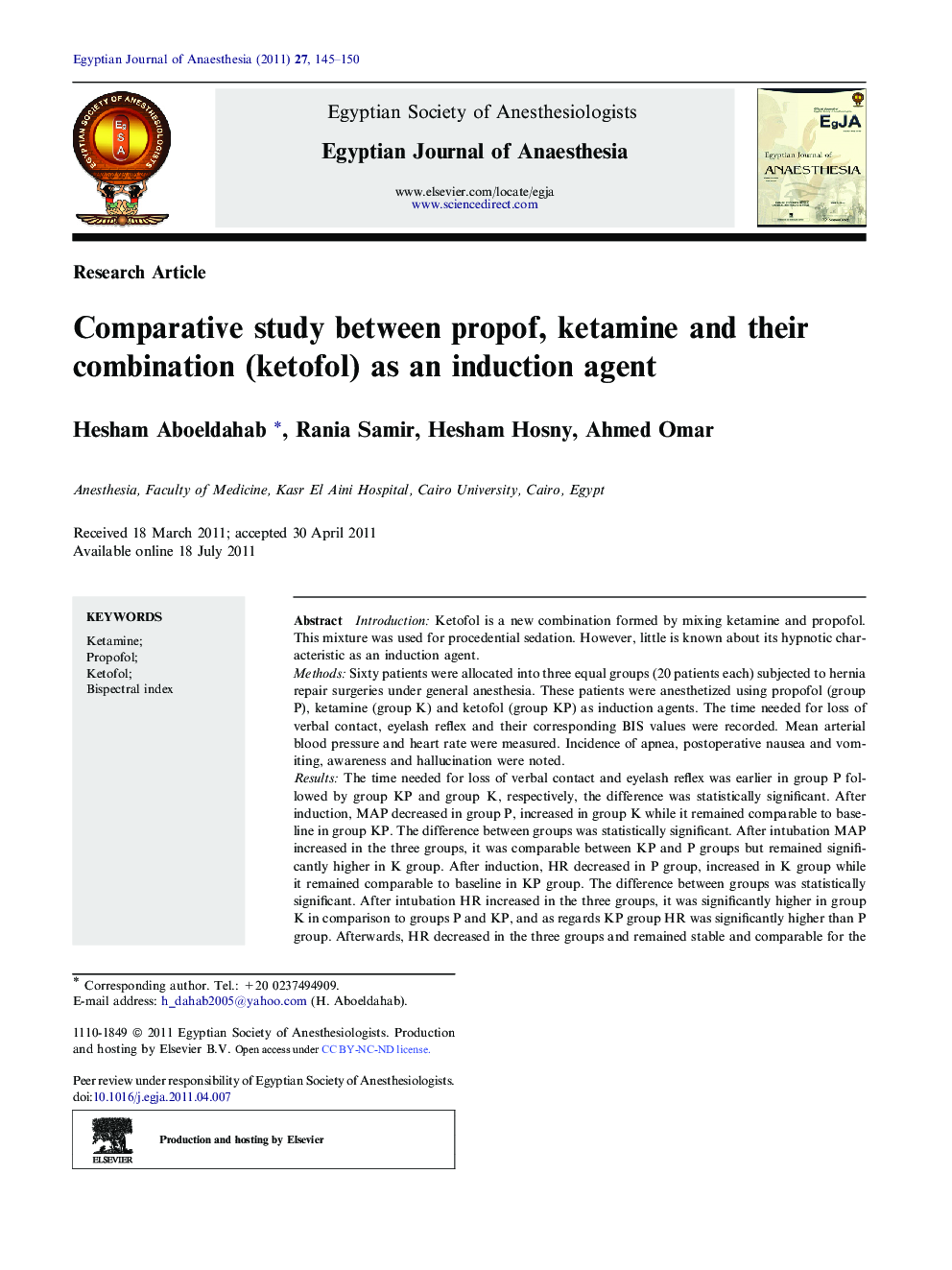| Article ID | Journal | Published Year | Pages | File Type |
|---|---|---|---|---|
| 2756428 | Egyptian Journal of Anaesthesia | 2011 | 6 Pages |
Introduction: Ketofol is a new combination formed by mixing ketamine and propofol. This mixture was used for procedential sedation. However, little is known about its hypnotic characteristic as an induction agent.Methods: Sixty patients were allocated into three equal groups (20 patients each) subjected to hernia repair surgeries under general anesthesia. These patients were anesthetized using propofol (group P), ketamine (group K) and ketofol (group KP) as induction agents. The time needed for loss of verbal contact, eyelash reflex and their corresponding BIS values were recorded. Mean arterial blood pressure and heart rate were measured. Incidence of apnea, postoperative nausea and vomiting, awareness and hallucination were noted.Results: The time needed for loss of verbal contact and eyelash reflex was earlier in group P followed by group KP and group K, respectively, the difference was statistically significant. After induction, MAP decreased in group P, increased in group K while it remained comparable to baseline in group KP. The difference between groups was statistically significant. After intubation MAP increased in the three groups, it was comparable between KP and P groups but remained significantly higher in K group. After induction, HR decreased in P group, increased in K group while it remained comparable to baseline in KP group. The difference between groups was statistically significant. After intubation HR increased in the three groups, it was significantly higher in group K in comparison to groups P and KP, and as regards KP group HR was significantly higher than P group. Afterwards, HR decreased in the three groups and remained stable and comparable for the rest of the surgical time. The Bispectral index readings of ketofol group showed intermediate values between the other two groups.Conclusion: Ketofol is a safe, effective alternative induction agent that lacks many side effects of its two components.
